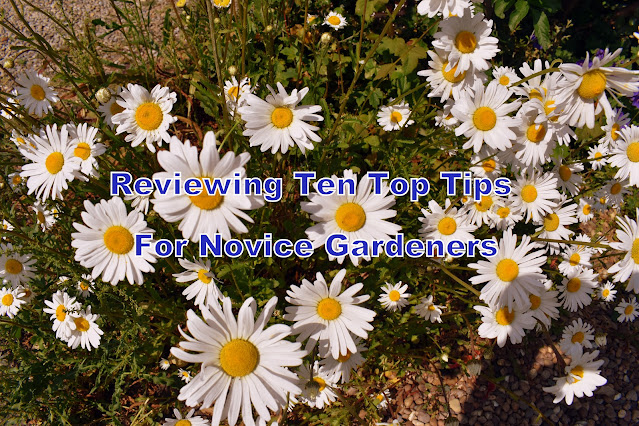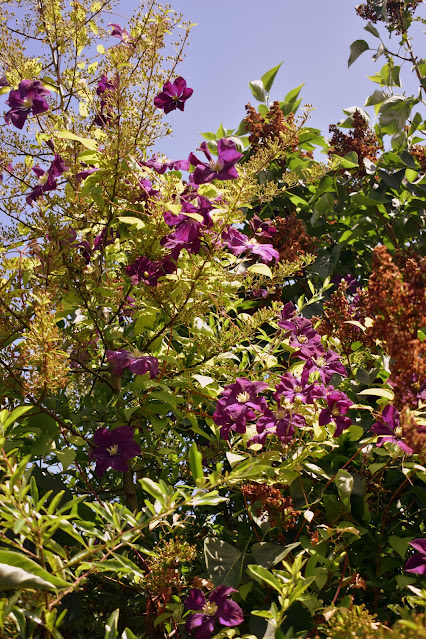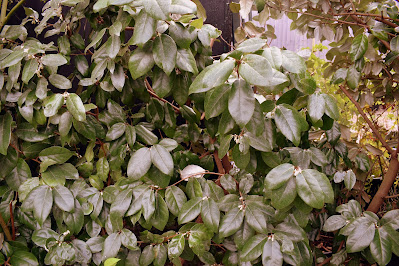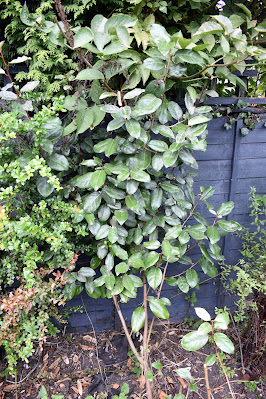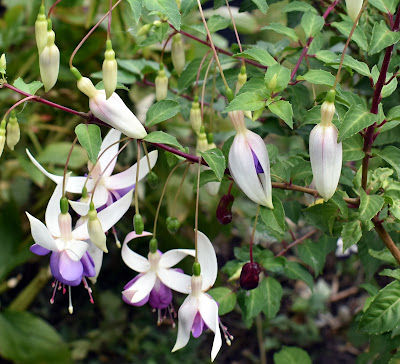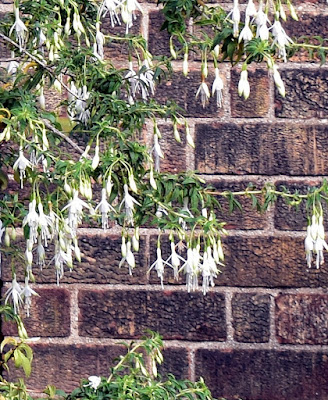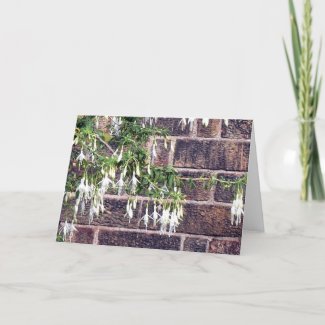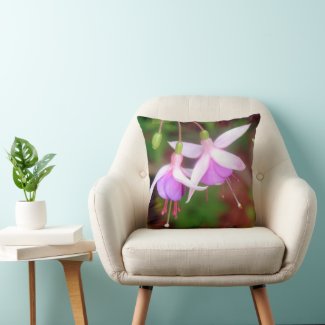Autumn is one of my favourite times of year. I love the still warm yet mellow sunshine, the quieter days and slowing down of nature, the still long days but earlier nights, the sound of the rain and the slight crispness in the air.
It all marks a transition time in the garden, there are still gorgeous vibrant autumn flowers and lots of green leaves and activity, yet we are very much leaving summer behind with every passing day. There are more seedheads and rosehips and berries in our gardens. In this time there are some key jobs we need to do now in the garden to clear, prepare and organise to get ready for winter and the spring to come.
1. Tidying Up The Garden(with caveats.)
I usually start my autumn tasks with taking stock of what I have and what did well and what did badly. I also clear out some of the old plant material and do some cutting back. In this clearing phase I am very mindful of nature and that we do need to leave lots of cover for insects and small creatures so they can live and survive the autumn and winter. So I tend to curate the tidying up and only do what is absolutely necessary.
I do clear out all the annuals from pots. They have grown, boomed, faded and set seed and completed their cycle. The plant itself can be discarded or put on the compost heap. I tend to tip out any loose compost onto the garden soil. Then I clean out all the pots.
With the Perennial flowers I prune them back for tidiness where needed, but leave as many seedheads and stalks for wildlife to feed on and hide in during the winter months. These can always be tidied up in the spring for a neater look.
Do be careful what you prune though, many plants and shrubs should not be pruned right now as any new growth or exposed branches may be susceptible to frost. Spring flowering shrubs should not be pruned now or you will be cutting off all the flowers. If in doubt leave them now.
If I had a greenhouse I would now bring in tender plants, but instead I start getting out my fleece to cover these plants for the winter.
All my evergreens are pruned now so that they will maintain their shape throughout winter and as they are the backbone of the garden in winter its important they look nice.
It won't be very long before leaves start turning all their beautiful colours and then falling to the ground. I tend to leave these leaves in the borders where the worms will do their thing and take them in to the soil and above soil leaves will provide shelter for tiny insects.
However I do clear leaves from the paths where they could become soggy in the rain and slippery underfoot. I also clear them from any gravel and the garden lawn as they are not good for the grass where they can cause fungal disease and in gravel they just look messy as they decompose.
Flowers like forget me nots are way past their best now. Do not just cut them down though. They can be lifted and divided then replanted in new places around the garden to make a bigger better display next year. Lift the whole clump, divide it gently with your hands being careful to gather enough of the root system and replant about a foot apart in new locations.
2. Caring for Lawns and Grass
Spring and Autumn are key times for lawn care and renovation. In many ways now Autumn is a better time.
Our spring was so dry that although i sowed new grass seed with the lack of rain it made watering a time consuming chore and then we had four heatwaves which scorched the grass and turned a large part of it brown. As we had a hosepipe ban we could not water it, but I knew that most grass recovers once it gets some rain.
So now in Autumn there is a chance to nurture the grass again and give it a better chance to recover. I start with scarifying the soil, so raking it with a lawn rake, which gets rid of all the dead thatch.
Then I use a fork in the soil every few inches to aerate the soil. After that a lawn feed is a good idea and it sets the lawn up for a good season.
To read more about overseeding a lawn please read Reviewing Overseeding A Lawn With Grass Seed.
Autumn is also the time for a final cut of the lawn. We hardly mowed our lawn this year due to the hot sunny weather and heatwaves. However now it has had some rain and grown and greened up we can give it a light trim before winter. I prefer to use a manual lawnmower and review the drawbacks and benefits here
3. Planting Plans
Autumn/Fall is a good time to review our planting in the garden and I usually increase my stock and plant beautiful spring flowering bulbs such as daffodils, crocuses and hyacinths during September and October. If you grow vegetables it is time to sow over wintering onions and garlic which are a good crop and useful in the kitchen. Tulips should be planted a little later during October and November.
I love doing this as although we rapidly approach winter, it is an act of joy that soon after Spring will arrive.
We have enough established shrubs and roses now. However, if you are wanting to plant any shrubs, hedges, trees or roses, it is more economical to buy bare root varieties now and plant in Autumn so that they can establish well before the winter and then they will settle and start to grow well in the springtime.
It is also a good time to move established shrubs that need moving to a better place to give them time t establish and then grow on in Spring. Even if it is rainy do always settle them in with a good drink of water and if there are dry spells you may need to keep watering yourself for a while. Always water deeply to make sure it reaches the roots.
4. Mulching Borders
For borders it is a good idea to lay down a good mulch now to protect plants and nurture the soil. Mulch can be organic like bark or compost or inorganic like pebbles or slate compost to name a few options.
Just ensure you mulch a couple of inches deep and keep a few inches of space around the base of any shrub and trees stems or trunks. More Information On Reviewing The Benefits Of Garden Mulch
5.Pruning Shrubs, Hedges And Roses
At this time of year I prune my tea and shrub roses, this is not the big prune but rather just a light cutting back so that they do not get caught up in the wind and suffer root rock as they sway. Therefore prune about a third off the top with secateurs or loppers. However if you like the rose hips you will need to leave them or prune very lightly
For pruners nearly every gardener has their favourites and it is very personal. You need to balance grip, weight, cutting power, ease of use and comfort overall. For me I like the Fiskars and the Wolf ranges.
Hedges that could not be cut before due to birds nesting are now perfectly fine to prune back and Autumn is a good time to do it so it stays tidy all winter.
6. Taking Care Of Wildlife In The Garden
Looking after or caretaking wildlife to me is a crucial part of gardening. Here in UK we are losing so much natural habitat that nature is increasingly reliant on our gardens to survive.
While August is a very quiet time in our garden for birds, come September and October they start coming back into the garden. It is a great idea to have a birdbath as water is more important than most of us realise.
Birds, insects and small mammals become more reliant on our gardens for food sources. This can be food we put out in bird feeders to the berries and seeds and roots in our gardens. In UK Hedgehogs require shelters such as log piles, leaf litter or bespoke hedgehog houses to live in during the colder months.
Insects and spiders need wild areas to shelter in and hunt from. So hollow stems of flowers, seed heads, leaf litter on soil it all helps them to live. So it hugely benefits these creatures to not be too tidy in our gardens.
For More ideas Reviewing How To Help Wildlife In our Gardens
Garden Tools We Need In Autumn
- Lawnmower
- Brush
- Rake
- Fork
- Spade
- Secateurs- I like my Wolf Bypass Secateurs
- Loppers
- Bulb planter
- Handheld Trowel and Fork
Some people have said to me that gardening ends in September, but for me there is such a lot to do in order to help wildlife, keep the garden looking good and healthy and safe for us.
Autumn/Fall is a lovely time to be outside, nice and cool, with often some mellow sunshine and lots of wildlife to watch and plants to find in our gardens to fascinate us.
Read More Gardening Reviews on ReviewThisGardening.com
Read Diary Of A Wild Country Garden Blog
Read More Product Reviews on ReviewThisProducts.com
Reviewing Six Key Gardening Tasks To Do In Autumn By Raintree Annie








